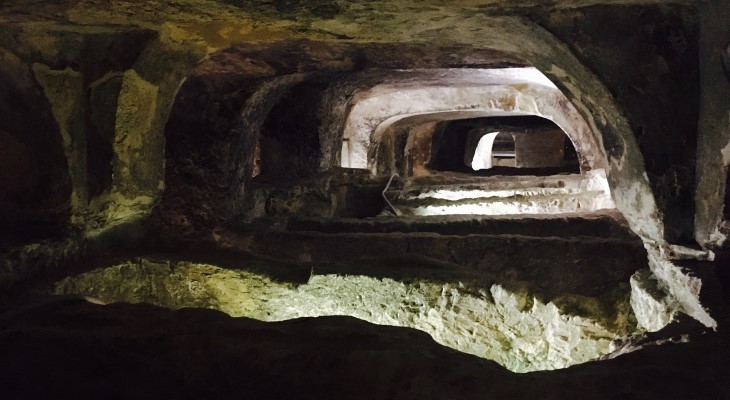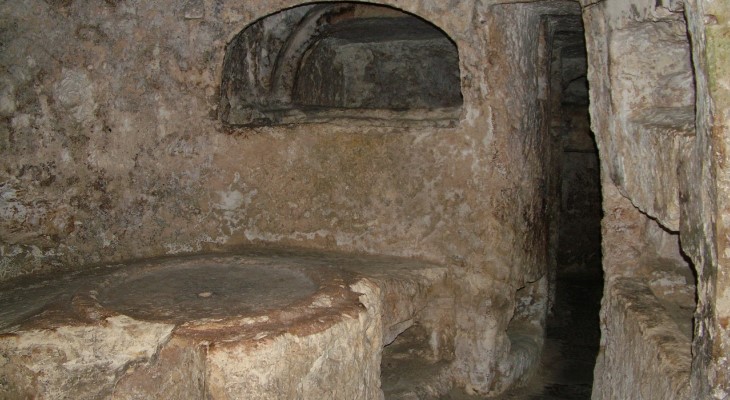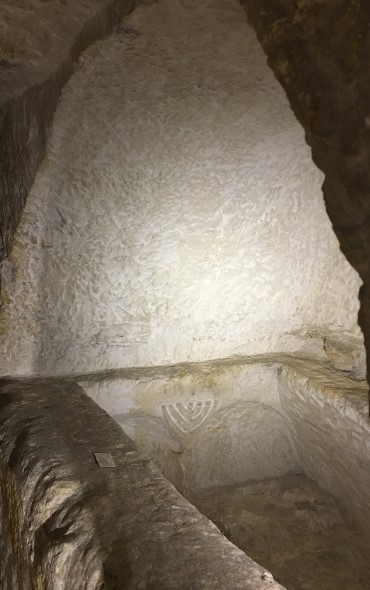The earliest and largest archaeological evidence of Christianity in Malta is also a fascinating insight into local underground architecture dating back some 2,000 years.
An underground cemetery is probably not your idea of a tourist attraction. But there is nothing creepy or ghoulish about this network of catacombs. On the contrary, they are as beautiful as they are intriguing. And there are (currently) no skeletons lurking in the shadows, I promise. Although there are plans for some skeletons to be exhibited in catacomb eight in the future - just a heads up!
St Paul’s catacombs is at the heart of an extensive complex of over 30 hypogea outside the walls of Malta’s old capital, Mdina, which was known as Melite in Roman times. Roman law prohibited burial within the city walls at the time, hence the catacombs. The system of interconnected passages and rock-cut tombs covers an area of over 10,000 square metres, and there is evidence that they were in use from the third century BC until the end of the Byzantine period in the 8th century AD. The largest communal catacomb covers around 2,000 sqm and could have accommodated hundreds of people.

Adriana Bishop
The smaller catacombs are accessed via 23 individual entrances scattered around a small peaceful garden on either side of the road. The recently opened visitor’s centre was purposely designed and constructed on stilts to protect the unique archaeological site on which it stands. Clever glass panels have been incorporated into the floor to give visitors a first glimpse of what treasures lie beneath their feet.
Senior curator at St Paul's Catacombs David Cardona explains the concept behind the ultra-modern structure welcoming visitors to this ancient site: "all the new structures at St Paul's Catacombs, including the visitor centre, have been designed to be as lightweight as possible and to offer full reversibility should they be dismantled. Although the stilts rest on bedrock, they do not directly touch the rock, and no rock excavation whatsoever was carried out."
While catacombs existed throughout the Roman empire, the ones in Malta are a unique example of indigenous underground architecture because their method of construction, hewn as they were into the rock, was not influenced by any other imported traditions.

©viewingmalta.com/Mick Cundy - Round agape table or triclinium
David highlights some of the unique features of Maltese catacombs: “the best known of these features are the agape tables or triclinia. These were round tables with reclining couches used for meals in commemoration of the dead. While such triclinia were used throughout the Roman world, only here in Malta have they survived almost intact, and it is only here that they were hewn out of the living rock.”
While catacombs are associated with early Christianity, they were first used by Pagans. However, they soon became the predominant form of burial for all people, including Christians and Jews. Interestingly, people from different religions had no issue being buried in the same grounds as others. Look out for Jewish menorahs inscribed in several of the tombs.

Adriana Bishop - tomb with Jewish menorah inscribed
Tombs come in different sizes reflecting the social standing of that particular person within the community, their family ties and sometimes, their profession. Bodies were buried with prized possessions that were thought could help the deceased in his or her journey to the underworld.
For David, a visit to the catacombs gives an insight into how the way we deal with death has not changed over the centuries. "Death is something we all have to pass through, and burials take on a special significance in our life. This was even more so in ancient times, when they took great care to bury their dead in rock-hewn cavities deep underground. A visit to St Paul's Catacombs and our other catacombs (St Augustine's, Tal-Mintna, Ta' Bistra and Salina which can be arranged by appointment) gives visitors a glimpse of how traditions change through time but were essentially aimed towards one end: giving their deceased loved ones the best burial they could while still ensuring that the dignity and social standing that they created for themselves would still be recognised after their death."
In late Medieval times, some catacombs were used as small underground churches and oratories. However, despite the fact that the catacombs were used as a cemetery for around 1,000 years and thousands of people were buried there, few personal details of these deceased survived. Only one name, Valeria, on a fragmented inscription made by, presumably, her parents, gives us a singular clue as to who was buried here.
"For me, the most interesting aspect of catacombs and burials in general is gathering data through which we can get to know the people buried there," explains David. "Personal items like jewellery that tell us about tastes, but also facial reconstructions which bring us face-to-face with our long-gone ancestors."
The underground catacombs are accessed via staircases, and some are a rather tight squeeze with low lighting. However, at every entrance the number of steps, minimum width and height are indicated, which is helpful, especially if you get claustrophobic!